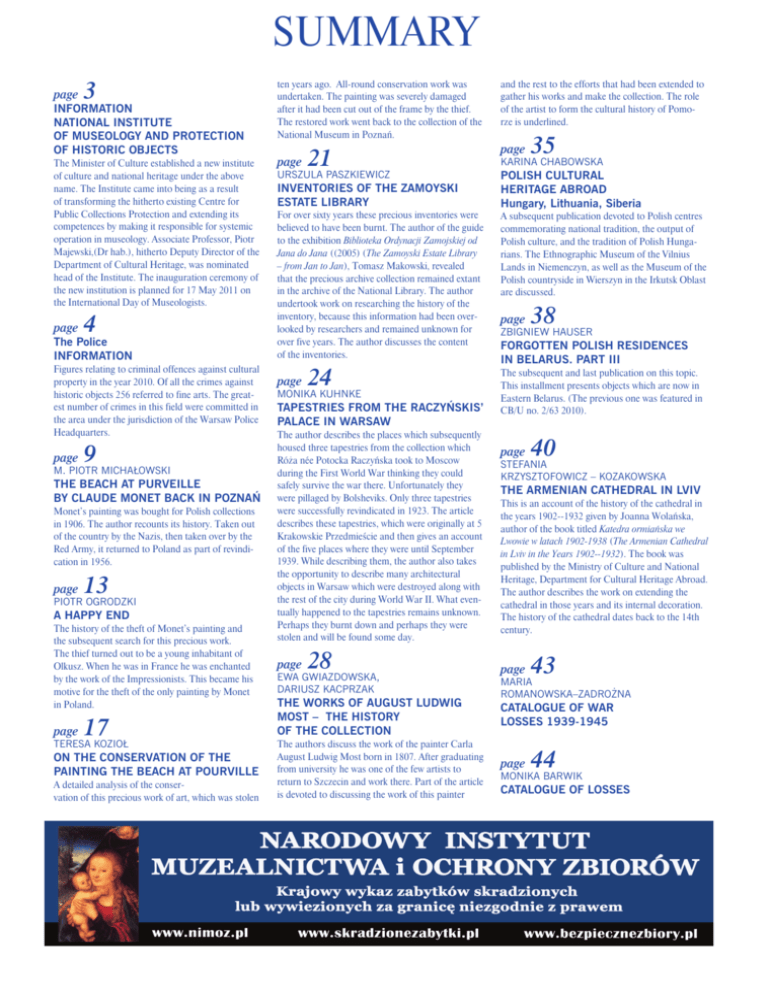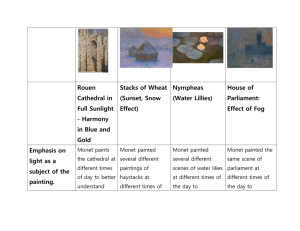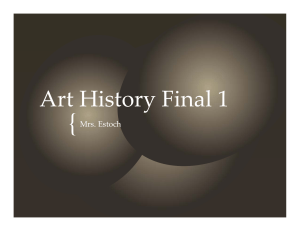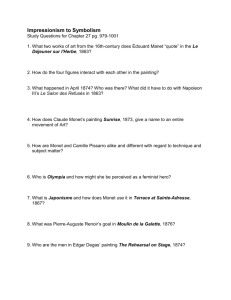summary
advertisement

SUMMARY page 3 INFORMATION NATIONAL INSTITUTE OF MUSEOLOGY AND PROTECTION OF HISTORIC OBJECTS The Minister of Culture established a new institute of culture and national heritage under the above name. The Institute came into being as a result of transforming the hitherto existing Centre for Public Collections Protection and extending its competences by making it responsible for systemic operation in museology. Associate Professor, Piotr Majewski,(Dr hab.), hitherto Deputy Director of the Department of Cultural Heritage, was nominated head of the Institute. The inauguration ceremony of the new institution is planned for 17 May 2011 on the International Day of Museologists. page 4 The Police INFORMATION Figures relating to criminal offences against cultural property in the year 2010. Of all the crimes against historic objects 256 referred to fine arts. The greatest number of crimes in this field were committed in the area under the jurisdiction of the Warsaw Police Headquarters. page 9 M. Piotr Michałowski THE BEACH AT PURVEILLE BY CLAUDE MONET BACK IN POZNAŃ Monet’s painting was bought for Polish collections in 1906. The author recounts its history. Taken out of the country by the Nazis, then taken over by the Red Army, it returned to Poland as part of revindication in 1956. page 13 Piotr Ogrodzki A HAPPY END The history of the theft of Monet’s painting and the subsequent search for this precious work. The thief turned out to be a young inhabitant of Olkusz. When he was in France he was enchanted by the work of the Impressionists. This became his motive for the theft of the only painting by Monet in Poland. page 17 Teresa Kozioł ON THE CONSERVATION OF THE PAINTING THE BEACH AT POURVILLE A detailed analysis of the conservation of this precious work of art, which was stolen ten years ago. All-round conservation work was undertaken. The painting was severely damaged after it had been cut out of the frame by the thief. The restored work went back to the collection of the National Museum in Poznań. page 21 Urszula Paszkiewicz INVENTORIES OF THE ZAMOYSKI ESTATE LIBRARY For over sixty years these precious inventories were believed to have been burnt. The author of the guide to the exhibition Biblioteka Ordynacji Zamojskiej od Jana do Jana ((2005) (The Zamoyski Estate Library – from Jan to Jan), Tomasz Makowski, revealed that the precious archive collection remained extant in the archive of the National Library. The author undertook work on researching the history of the inventory, because this information had been overlooked by researchers and remained unknown for over five years. The author discusses the content of the inventories. page 24 Monika Kuhnke TAPESTRIES FROM THE RACZYŃSKIS’ PALACE IN WARSAW The author describes the places which subsequently housed three tapestries from the collection which Róża née Potocka Raczyńska took to Moscow during the First World War thinking they could safely survive the war there. Unfortunately they were pillaged by Bolsheviks. Only three tapestries were successfully revindicated in 1923. The article describes these tapestries, which were originally at 5 Krakowskie Przedmieście and then gives an account of the five places where they were until September 1939. While describing them, the author also takes the opportunity to describe many architectural objects in Warsaw which were destroyed along with the rest of the city during World War II. What eventually happened to the tapestries remains unknown. Perhaps they burnt down and perhaps they were stolen and will be found some day. page 28 Ewa Gwiazdowska, Dariusz Kacprzak THE WORKS OF AUGUST LUDWIG MOST – THE HISTORY OF THE COLLECTION The authors discuss the work of the painter Carla August Ludwig Most born in 1807. After graduating from university he was one of the few artists to return to Szczecin and work there. Part of the article is devoted to discussing the work of this painter and the rest to the efforts that had been extended to gather his works and make the collection. The role of the artist to form the cultural history of Pomorze is underlined. page 35 Karina Chabowska POLISH CULTURAL HERITAGE ABROAD Hungary, Lithuania, Siberia A subsequent publication devoted to Polish centres commemorating national tradition, the output of Polish culture, and the tradition of Polish Hungarians. The Ethnographic Museum of the Vilnius Lands in Niemenczyn, as well as the Museum of the Polish countryside in Wierszyn in the Irkutsk Oblast are discussed. page 38 Zbigniew Hauser FORGOTTEN POLISH RESIDENCES IN BELARUS. PART III The subsequent and last publication on this topic. This installment presents objects which are now in Eastern Belarus. (The previous one was featured in CB/U no. 2/63 2010). page 40 Stefania Krzysztofowicz – Kozakowska THE ARMENIAN CATHEDRAL IN LVIV This is an account of the history of the cathedral in the years 1902--1932 given by Joanna Wolańska, author of the book titled Katedra ormiańska we Lwowie w latach 1902-1938 (The Armenian Cathedral in Lviv in the Years 1902--1932). The book was published by the Ministry of Culture and National Heritage, Department for Cultural Heritage Abroad. The author describes the work on extending the cathedral in those years and its internal decoration. The history of the cathedral dates back to the 14th century. page 43 MARIA ROMANOWSKA–ZADROŻNA CATALOGUE OF WAR LOSSES 1939-1945 page 44 MONIKA BARWIK CATALOGUE OF LOSSES





